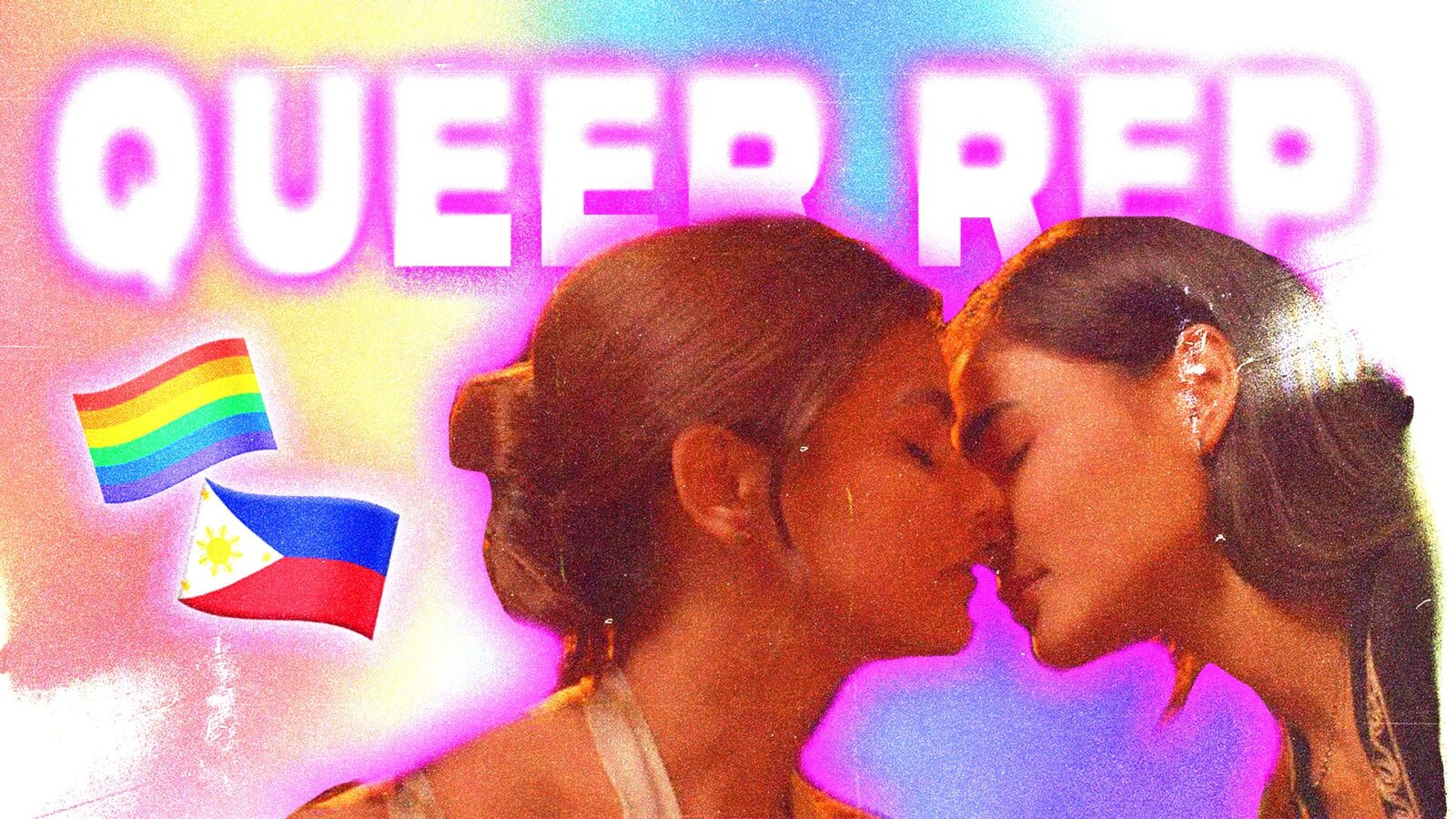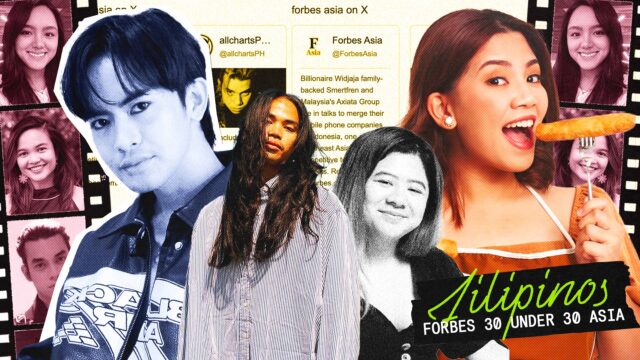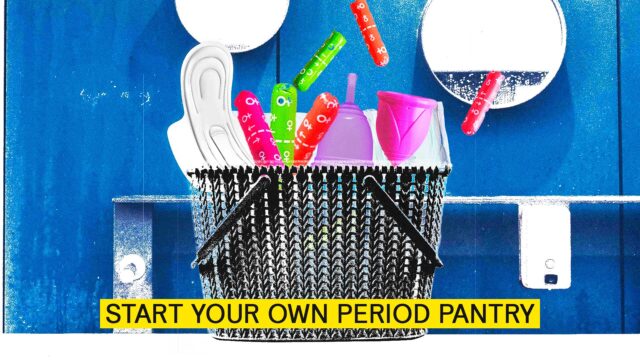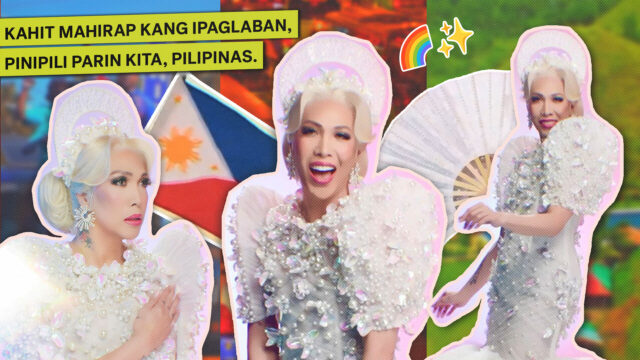With help from Gen Z members of the LGBTQIA+ community, we talk about the importance of diverse, normalized queer narratives in Filipino media.
While the prevalence of queer identities on local screens grows, the fight for diverse, authentic representation in Filipino media is an ongoing struggle. It’s not enough that a queer person is in a show or a movie, but the stories we tell must capture the breadth of queer experience.
It is, of course, important to be able to portray the unique struggles faced by the LGBTQIA+ community, as they are a marginalized community still not afforded the same rights as cisgender heterosexual Filipinos. But as we see the same characteristics and (often upsetting) storylines over and over again, isn’t it also important to tell stories where queerness is not the problem for once?
We reached out to a few queer Gen Z individuals—Jay, Tristan, Rylle, Izzy, Dom, Clara, and Kimiko—to get their takes on why normalized representation matters in the local scene, because time and time again, this generation proves they know what they’re up against, and they know what they’re talking about.
DEPTH AND DIVERSITY
@anothergaymer did you figure out who i referenced? #gay #lgbt #lgbtq #lgbtqia #representation #pride #pridemonth ♬ original sound – J
Countless studies and perspectives have emerged detailing how much the portrayal of queerness on Filipino screens are one-dimensional, stereotypical and often harmful, as they perpetuate rigid ideals about how queerness “should” be like.
Young writer Jay recalls growing up in the 2000s and watching Filipino shows where queer characters were present, but relegated to roles like the main character’s friend or comic relief. “While these are not inherently untrue portrayals,” they share. “[They] diminish the vast and complex tapestry of the queer identity and our representation falls easily into stereotypes—stereotypes that subconsciously affect people’s perception on the LGBTQ+ community, and these stereotypes often lead to harmful rhetoric.”
Given that there still exists oppression and discrimination against the LGBTQIA+ community, authentic, sensitive representation allows queer individuals to envision possibilities and be open to the breaking of boundaries.
Student Tristan shares, “For most of my life, I didn’t get the support system and healthy environment that some queers enjoy.
“The only way that I could get a vague sense of the community that was waiting for me on the other side was by consuming media portraying people like me as real individuals with valid experiences.”
The queer experience is not monolithic—and the stories we tell shouldn’t be, either.
STORIES ON SCREEN
Representing queerness in local media, recent graduate Rylle says, draws attention to the struggles of the queer community. The kicker is—queer people struggle with more than just their genders and sexualities, and presenting those problems alongside the struggle of being queer can paint a more complete, more resonant picture of queerness to the general public. Stories on screen are valued both by the community whose stories are told as well as the people outside those circles.
“Queer representation reaches out to the young people who need to hear and see that it’s more than okay to take up space. It helps us plant our existence in society when we are able to see and relate to stories that are reflective of our own,” Dom remarks.
“Let the gays have their cheesy romcoms!” is a frequent sentiment echoed on social media. Having marginalized identities take up space in predominantly heterosexual contexts brings people on equal ground. So much of queer media focuses on homophobia, coming out narratives, and queer trauma. It’s time those stories stop being the only option and we explore more ways of representing queerness and queer love in media.
im so sick of people holding queer media to such a high standard, we want shitty romcoms and cheesy tv shows just like everyone else!
— ak (@VENEFLWRS) April 27, 2023
NORMALIZATION AS RESISTANCE
Normalizing queer existence, relationships, and love in a story means not treating queerness as the source of conflict or a problem to be solved. In a way, it resists predominant narratives that queerness is inherently tied to suffering and fear, othering and discrimination.
Recent graduate Izzy explains that “normalized queer representation helps overcome heteronormativity.” Shifting focus from gender and sexuality being the main concern in a narrative to acknowledging the complexity of queer experiences replaces “the idea na heterosexual relationships and heteronormative expressions of gender are the norm.” She adds:
“Parang natatanggal yung way of thinking na being queer is being an outsider.”
A paradox lies within this nuance. While the LGBTQIA+ community is inherently “different” by virtue of their identity, their experiences are often set apart from those experienced by cisgender heterosexuals, as if they are incapable of feeling or acting or behaving the way the latter do just because they don’t fit into the perceived standards of what is “normal.”
“Despite queerness defying standards at its core, normalizing queer media offers comfort to the audience,” Clara comments. Pushing for the normalcy of queerness, while still acknowledging the community’s unique struggle, could lead to valuable conversations.
@fundforwomensequality The lack of representation of LGBTQ people in media is still a real issue. By seeing LGBTQ people represented in films, TV shows, and other forms of media, it not only gives encouragement to those struggling to come out but also helps fight outdated stereotypes. #lgbtq #mediarepresentation #lgbtqrights #inclusion #equality #lgbtqvisibility #queerpride ♬ original sound
Because yes, highlighting queer struggle illuminates how difficult it is to exist as a queer person, and could thus spark much-needed change. But stories that don’t focus on the struggles of being queer are important too, as they help queer individuals and audiences nuance their understanding of what it means to be queer, and reassures members of the community that it’s possible to live openly and freely. Jay explains,
“[Stories] of joy and love and success, of pain and confusion, of failures and heartbreaks, aren’t exclusive to straight people.”
LEAPS FORWARD
Artists and filmmakers like Samantha Lee have championed normalizing queer experience, particularly with her first miniseries Sleep With Me (2022), where the love story between two women is not complicated by their sexualities, but rather other issues and problems. Queerness was a norm itself. The intersectionality of queerness and disability are present, putting forth the value of acknowledging and highlighting such struggle, but queerness is not presented as a problem.
This is becoming a comfort series— sobrang feel good, light, and kilig. Lmao no dead lesbians nor arranged marriage, and grabe the normalcy cos it wasnt about coming out or what hays #sleepwithme pic.twitter.com/f7ORTpzter
— Mela is seeing Twice ✨ (@carmelabiscuit) August 20, 2022
Stories like these set a precedent for young storytellers, producers, and audiences to patronize diverse queer representation in Filipino media.
“In a way,” Rylle muses. “[Filipinos] haven’t really basked in their own unique queerness yet. And it’s still a struggle for some to come to terms with who they are, because they don’t have anything to ‘put’ themselves in yet, especially since most of what they understand of the Filipino environment is prejudice.”
Wouldn’t we love to change that? To foster a change in how the LGBTQIA+ community is perceived? To present more possibilities to people still figuring out who they are? As artist Kimiko notes,
“Normalized queer representation in Filipino media matters because it recognizes that queer people are just people—imperfect and beautiful humans. Queer people have hopes, dreams, and fears [just] like cishet people. We all laugh and we all cry.”
So if you’re an aspiring filmmaker or storyteller, don’t feel as if you have to ascribe to certain formulas or stick to the usual narratives. Diverse stories matter. Your stories matter. The struggle for queer liberation is a blazing fire, and could be further stoked by a simple, bold statement: we are here.
Continue Reading: What the Success of Rookie Means for Samantha Lee and Pat Tingjuy





